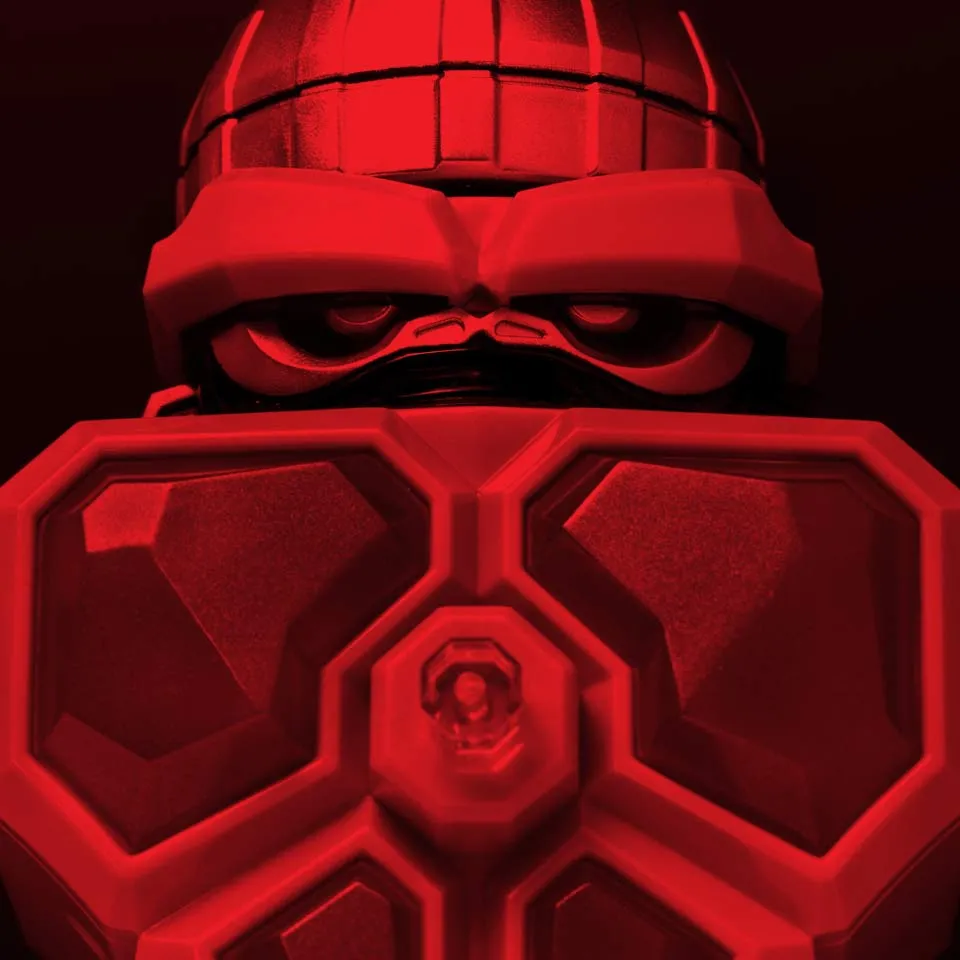My Light is Your Life
Article in the Exhibition Catalogue GOLEM
Anna Dorothea Ludewig
Is the golem a luminous figure? In what is presumably the best-known golem legend, he is presented to us as the rescuer of the Prague Jewry, since Rabbi Judah Loew was able to save his congregation from expulsion and death with the help of the mythical, mystical creature, making the Jewish ghetto a safe haven (at least temporarily). The MaHaRaL (Moreinu ha-Rav Loew, "Our Teacher, Rabbi Loew") ostensibly created the golem in the sixteenth century in response to an acute threat. Made out of inorganic material (clay), he was brought to life. This act is a "lesser" story of creation, as the golem remains incomplete. He cannot speak, and opinions are divided regarding his capacity for empathy. The golem’s limited ability to communicate leaves him a crude creature, dependent on his maker, and his superhuman powers can be used for either good or evil.
The creator and master must be a pious and learned Jew, so the creation of a golem is not an act of arrogance, as is reported in numerous stories about artificial humans and monsters. Instead, the golem is a divine service in a literal sense. The act first becomes hubris when the creator does not "kill" the golem after its purpose has been served, that is, when the golem is used for purposes without divine legitimation. There are myriad stories about golems who increasingly get out of control and ultimately kill their creators. Can the golem be a luminous figure?
Looking at the cultural history of the story, it can be shown that the golem originated in the medieval kabbalah, but its general effective force did not unfold until the nineteenth century, when also German-speaking Jews, inspired by the numerous collections of fairytales and sagas such as those of the Brothers Grimm, produced their own editions of popular folklore, including the stories of the Golem (of Prague). This legend suddenly became a focus in the twentieth century. Yehudah Yudel Rosenberg published a book of folk tales about the golem in 1909, in Hebrew and Yiddish; in 1919 Chayim Bloch published a German version (though not crediting Rosenberg) called Der Prager Golem. Von seiner Geburt bis zum Tod, published in English in 1925 as The Golem: Legends of the Ghetto of Prague. This text stylizes the golem into a rescuer used "for the protection of persecuted Jews," and "a symbol of God’s help, which always comes in due season, although frequently (like the Golem) at the last, most anxious moment“ (Chayim Bloch, p. 35). The golem is thereby reinterpreted to become a narrative of modern Judaism. This attempt to counter the aggressive antisemitism of the prewar and interwar periods with a superhuman redeemer figure, whose existence invokes the privileged relationship between God and his chosen people, reflects the conflicts and ambivalences of Judaism in the early twentieth century. Against this background the golem is indeed a luminous figure.
Anna-Dorothea Ludewig studied comparative literature, completing her doctorate in 2007 with a dissertation on the subject Between Czernowitz and Berlin: German-Jewish Identity in the Life and Works of Karl Emil Franzos, 1847–1904. She is a research associate at the Moses Mendelssohn Center for European-Jewish Studies, and her main area of study is cultural and literary history. She is also a member of the editorial staff of Medaon – online journal for Jewish life in research and education.
Translated by Allison Brown
My Light is Your Life
Krištof Kintera, Prague, 2009
Lightbulbs, cables, electronic equipment, ca. 470 x 450 cm
Photo: Courtesy of Krištof Kintera
Citation recommendation:
Anna Dorothea Ludewig (2016), My Light is Your Life. Article in the Exhibition Catalogue GOLEM.
URL: www.jmberlin.de/en/node/4688

Online Edition of the GOLEM Catalog: Table of Contents
The Golem in Berlin: Introduction by Peter Schäfer
Chapter 1
- The Golem Lives On: Introduction by Martina Lüdicke
- Current page: My Light is Your Life: Text by Anna Dorothea Ludewig
- Avatars: Text by Louisa Hall
- The Secret of the Cyborgs: Text by Caspar Battegay
Chapter 2
- Jewish Mysticism: Introduction by Emily D. Bilski
- Golem Magic: Text by Martina Lüdicke
- Golem, Language, Dada: Text by Emily D. Bilski
Chapter 3
- Transformation: Introduction by Emily D. Bilski
- Jana Sterbak’s Golem: Objects as Sensations: Text by Rita Kersting
- Crisálidas (Chrysalises): Text by Jorge Gil
- Rituals: Text by Christopher Lyon
- A Golem that Ended Well: Text by Emily D. Bilski
- On the Golem: Text by David Musgrave
- Louise Fishman’s Paint Golem: Text by Emily D. Bilski
Chapter 4
- Legendary Prague: Introduction by Martina Lüdicke
- Golem Variations: Text by Peter Schäfer
- Rabbi Loew’s Well-Deserved Bath: Text by Harold Gabriel Weisz Carrington
Chapter 5
- Horror and Magic: Introduction by Martina Lüdicke
- Golem and a Little Girl: Text by Helene Wecker
- The Golem with a Group of Children Dancing: Text by Karin Harrasser
- Bringing the Film Set To Life: Text by Anna-Carolin Augustin
- Golem and Mirjam: Text by Cathy S. Gelbin
Chapter 6
- Out of Control: Introduction by Emily D. Bilski
- Golem—Man Awakened with Glowing Hammer: Text by Arno Pařík
- Dangerous Symbols: Text by Charlotta Kotik
- Be Careful What You Wish For: Text by Marc Estrin
Chapter 7
- Doppelgänger: Introduction by Martina Lüdicke
- From the Golem-Talmud: Text by Joshua Cohen
- Kitaj’s Art Golem: Text by Tracy Bartley
- The Golem as Techno-Imagination?: Text by Cosima Wagner
See also
- GOLEM: 2016, online edition with selected texts of the exhibition catalog
- GOLEM: 2016, complete printed edition of the exhibition catalog, in German
- Golem. From Mysticism to Minecraft: Online Feature, 2016
- GOLEM: Exhibition, 23 Sep 2016 to 29 Jan 2017
